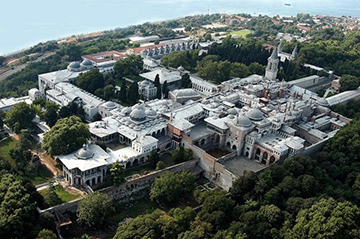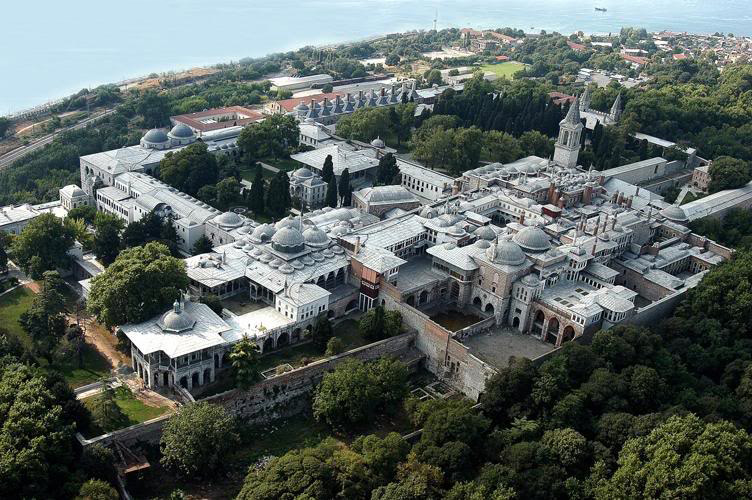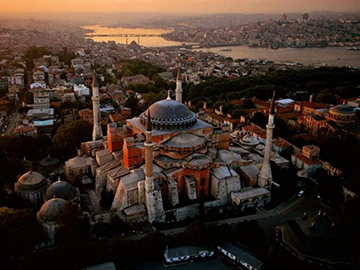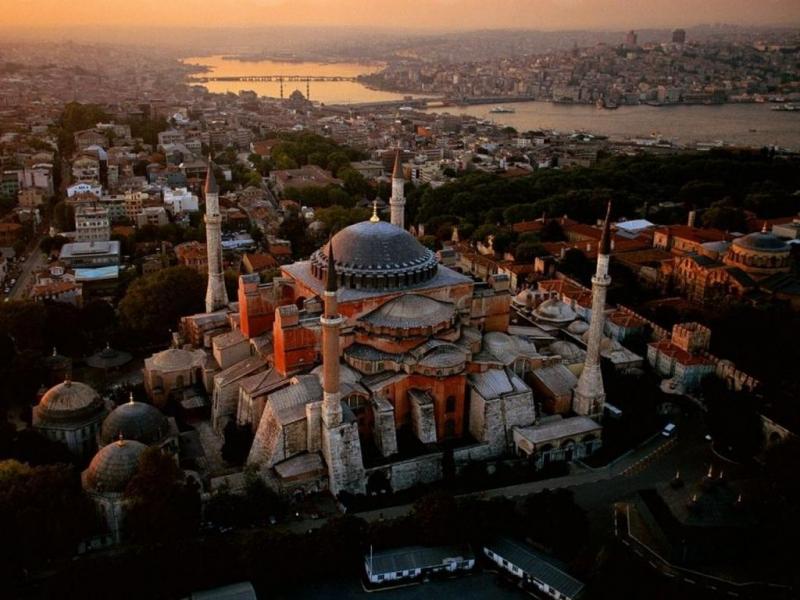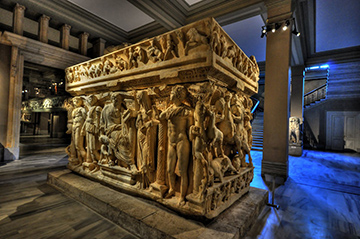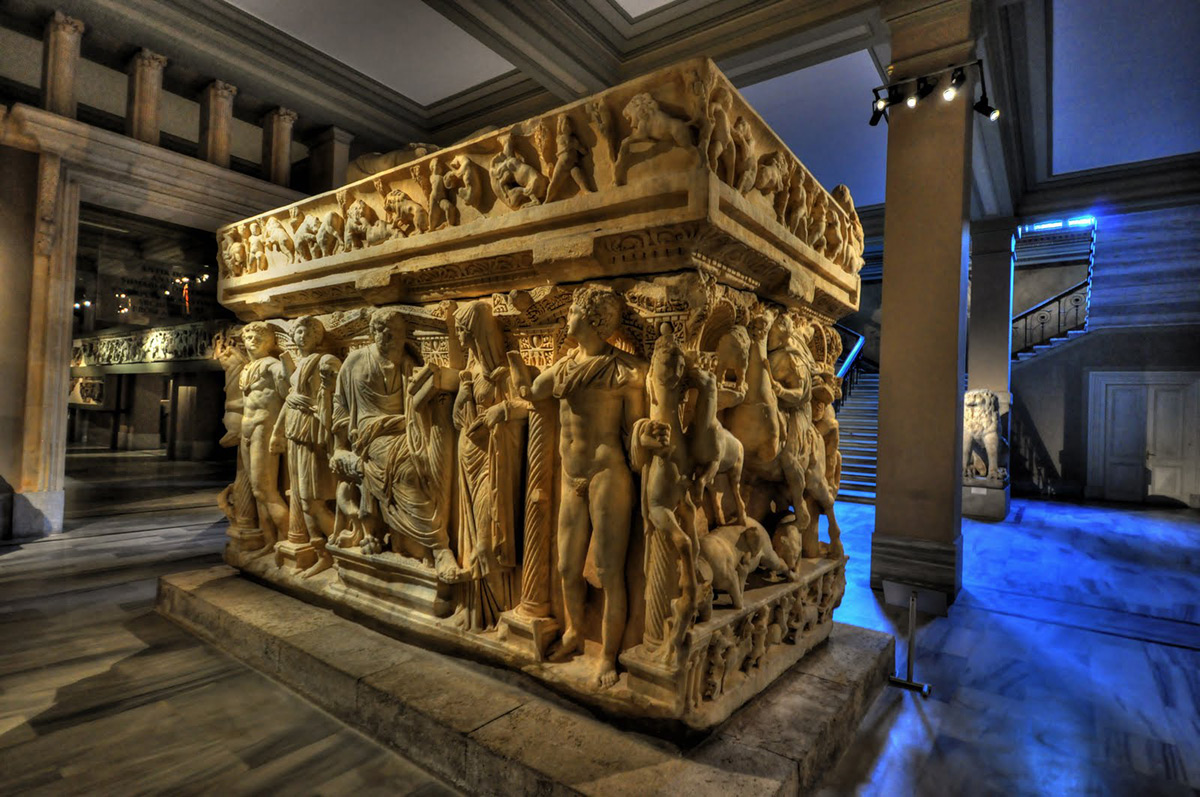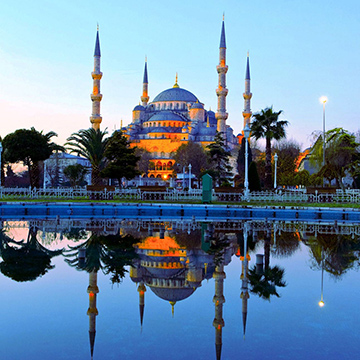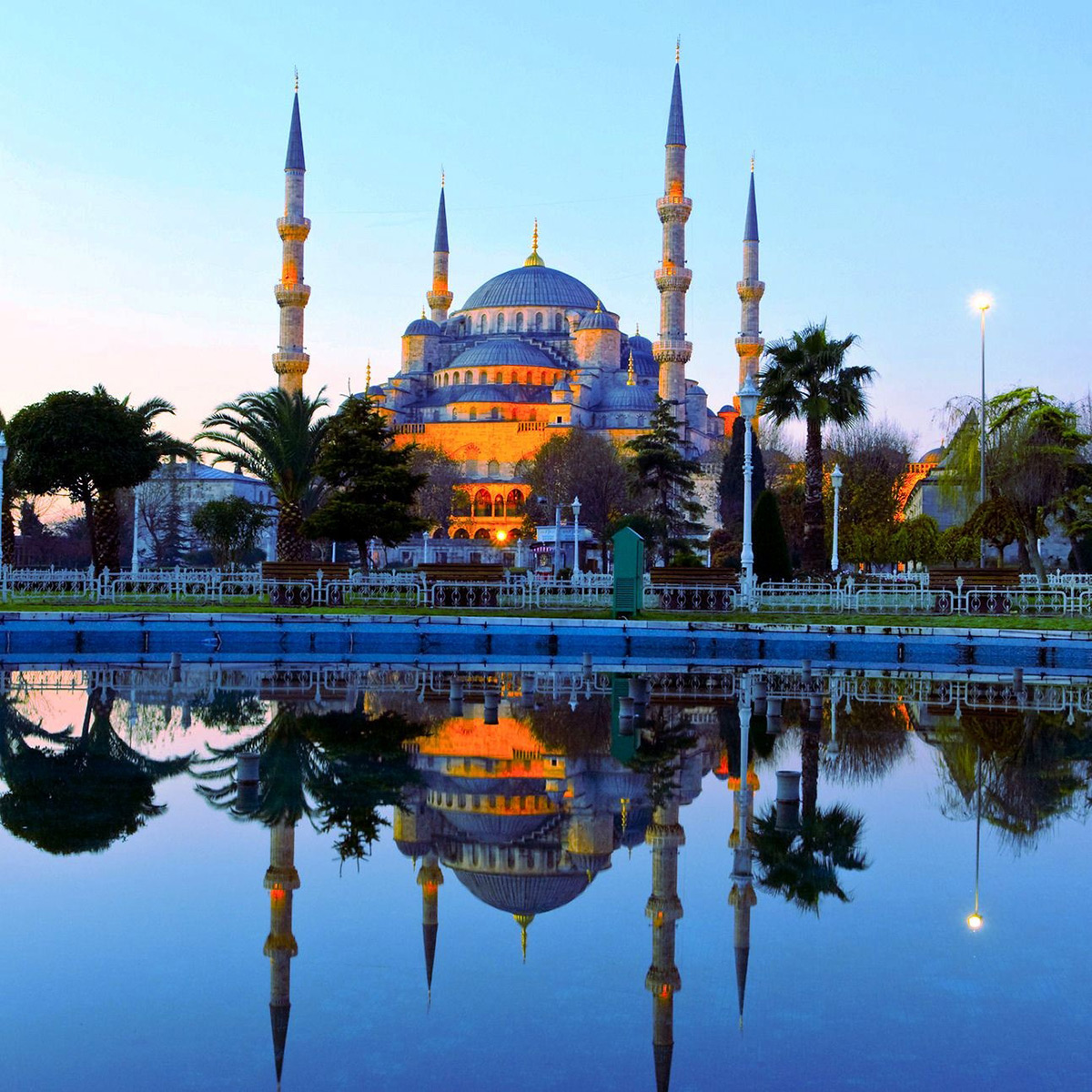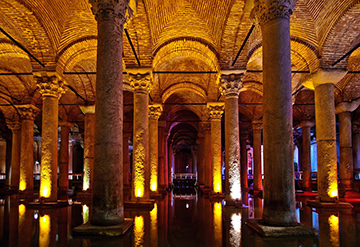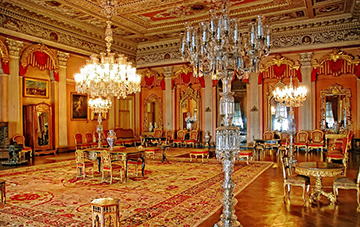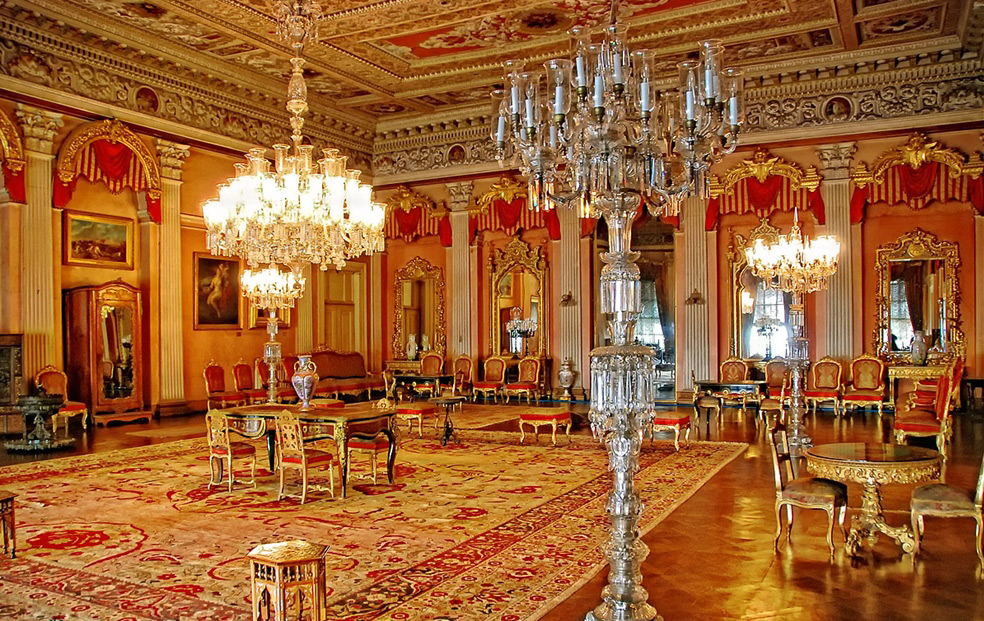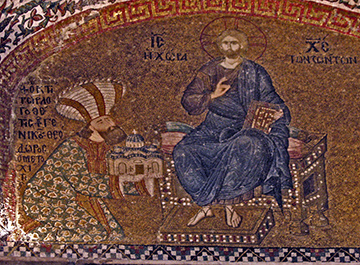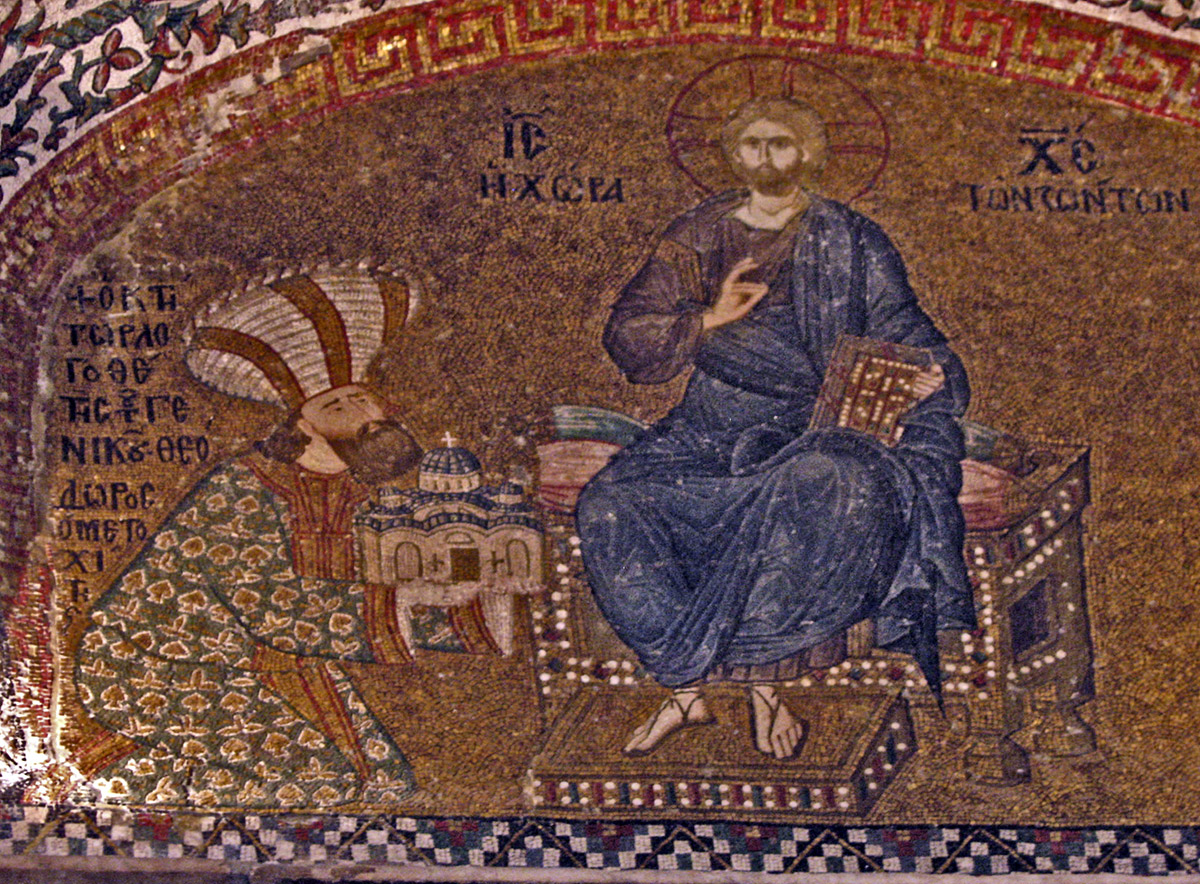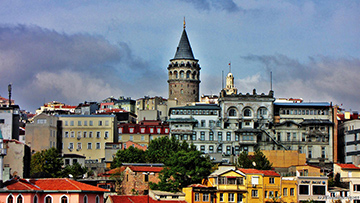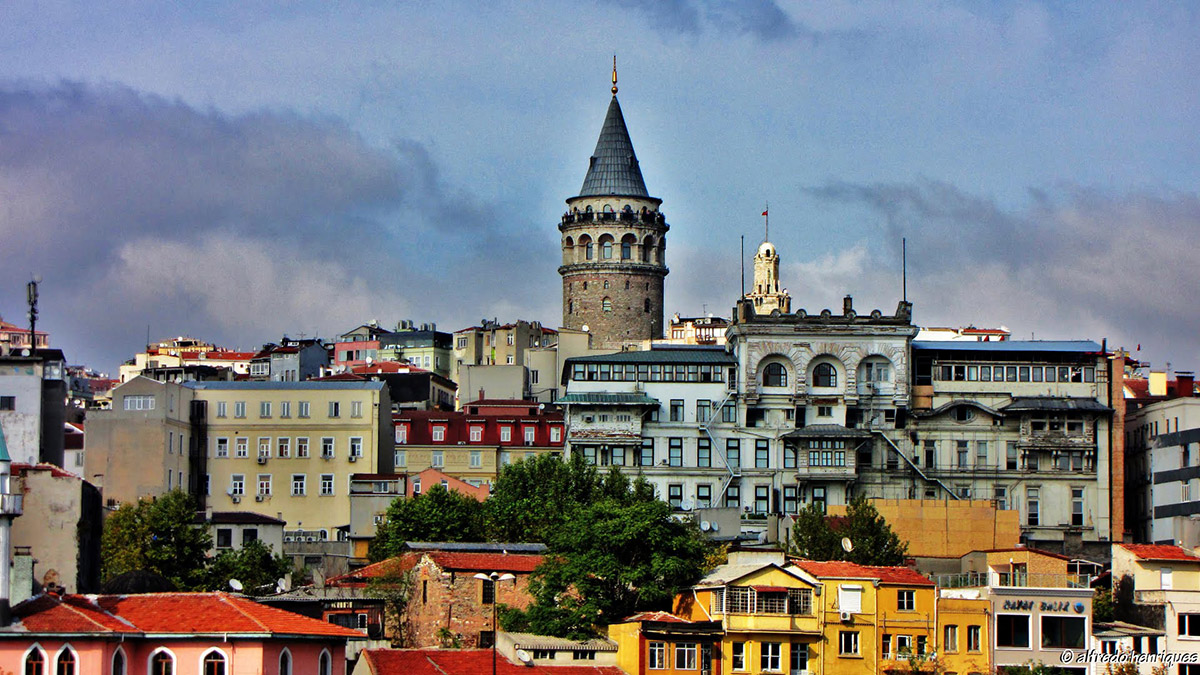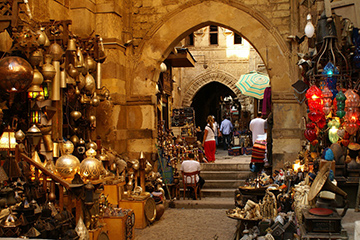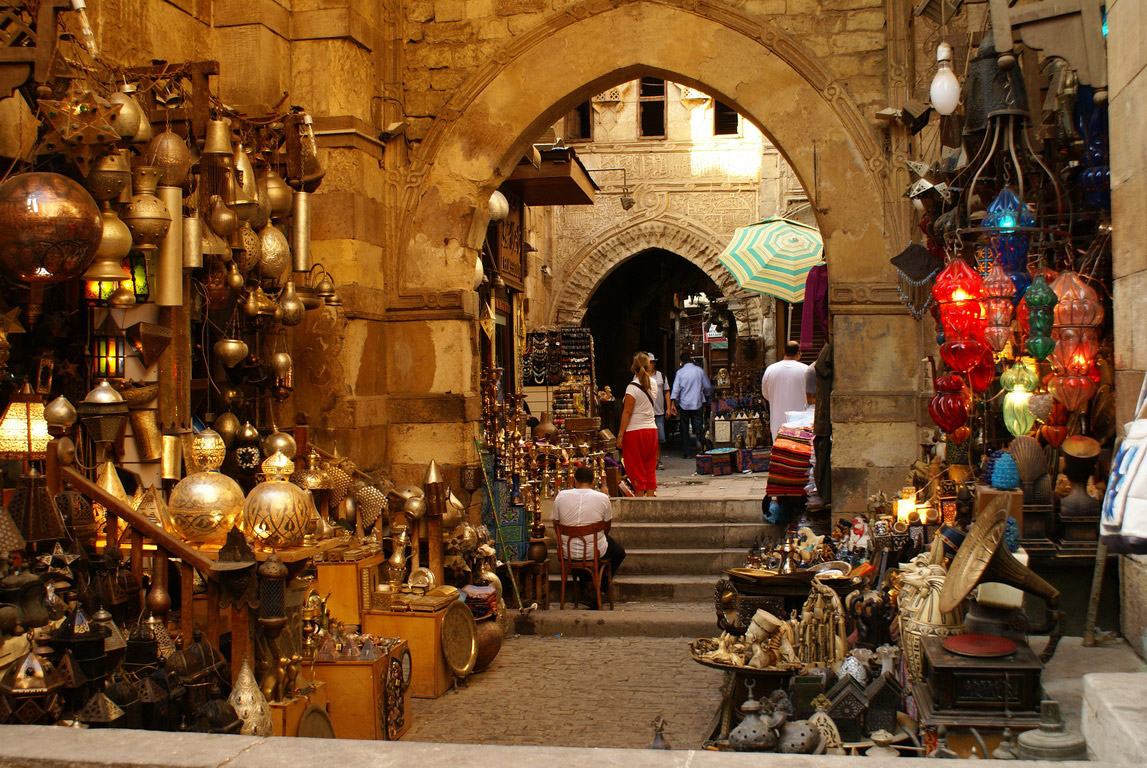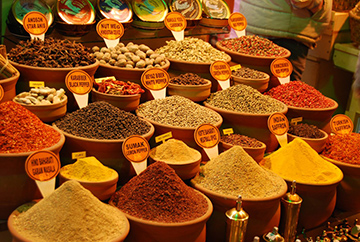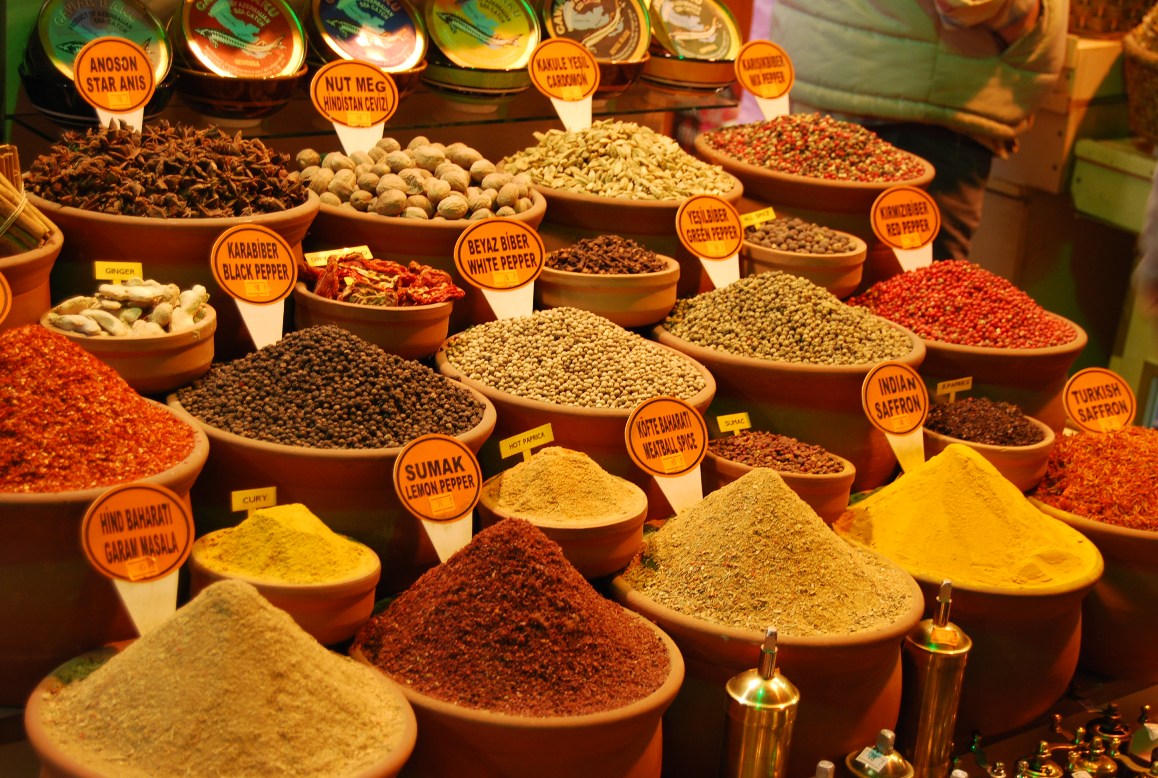Historical Places
After the conquest of Istanbul by Mehmed the Conqueror at 1453, construction of the Topkapı Palace was started at the year 1460 and completed at 1478 . Palace was built upon a 700.000 squaremeters area on an Eastern Roman Acropolis located at the Istanbul Peninsula between Sea of Marmara, Bosphorus and the Golden Horn. Topkapı Palace, was the administrative, educational and art center of the Empire for nearly four hundred years since Mehmed the Conqueror until Sultan Abdulmecid who is the thirty-first Sultan. Although Palace was abandoned by the Ottoman Dynasty by moving to the Dolmabahçe Palace at middle 19th century, Topkapı Palace was protected its importance everytime.
After the establishment of the Republic of Turkey, Topkapı Palace, was transformed into a museum at the date April 3th 1924 and it was also the first museum of the Republic of Turkey. Topkapı Palace Museum is covering approximately 400.000 squaremeters at the present day. Topkapı Palace divided from the city from the land-side by the Imperial Walls which is made by Mehmed the Conqueror. It divided from the city also from the sea-side by the Byzantine Walls. Topkapı Palace is one of the biggest palace-museums with its architectural structures, collections and approximately 300.000 archive papers.
- Museum is open everyday except Tuesdays.
- Visit Hours
- Winter Season: Between November 1st - April 15th
- Museum, Harem and Hagia Irene can be visited between 9:00 AM - 4:45 PM
- Summer Season: Between April 15th - November 1st
- Museum, Harem and Hagia Irene can be visited between 9:00 AM - 6:45 PM
- Museum Ticket : 30 TL
- Harem Ticket : 15 TL
- Hagia Irene Ticket: 20 TL
- Distance from Miniature Boutique Hotel 5 minutes by walking
The Hagia Sophia, one of the historical architectural wonders that still remains standing today, has an important place in the art world with its architecture, grandness, size and functionality.
The Hagia Sophia, the biggest church constructed by the East Roman Empire in Istanbul, has been constructed three times in the same location. When it was first built, it was named Megale Ekklesia (Big Church); however, after the fifth century, it was referred to as the Hagia Sophia (Holy Wisdom). The church was the place in which rulers were crowned, and it was also the biggest operational cathedral in the city throughout the Byzantine period.
Istanbul was occupied by Latins between 1204 and 1261, during the Holy Crusades, when both the city and the church were damaged. The Hagia Sophia was known to be in bad condition in 1261, when Eastern Rome took over the city again.
Following Fatih Sultan Mehmed’s (1451-1481) conquer in 1453, Hagia Sophia was renovated into a mosque. The structure was fortified and was well protected after this period, and remained as a mosque. Additional supporting pillars were installed during the East Roman and Ottoman periods as a result of the damage that the structure experienced due to earthquakes in the region. The minarets designed and implemented by Mimar Sinan have also served to this purpose
- Hagia Sophia Museum is available everyday for visiting except Mondays.
- Summer Schedule- April 15 - October 1
- Visiting Hours: 09.00 - 19.00
- Winter Schedule- October 1 – April 15
- Visiting Hours: 09:00- 17:00
- Museum Ticket : 30 TL.
- Distance from Miniature Boutique Hotel 5 minutes by walking
The Istanbul Archaeological Museums, inherited by the Republic of Turkey from the Ottoman Empire, is hosting the outcomes of the first activities in the field of museum works. In fact, in the Ottoman era, traces of the interest in collecting historical artifacts goes back to the era of Sultan Mehmed II the Conqueror.
Its name is plural, since there are three different museums under the same administration: The Archaeological Museum, the Ancient Orient Museum (Eski Şark Eserleri Müzesi) andTiled Kiosk Museum (Çinili Köşk Müzesi).
During an İstanbul Archaeological Museums tour, it is possible to visit the extraordinarily beautiful garden of the museum and the three different buildings inside this garden.
The İstanbul Archaeological Museums, which is housing various artifacts from civilizations that had left their traces to different periods of the history, is one of the 10 most important world-class museums designed and used as a museum building. Additionally, it is the first institution in Turkey arranged as a museum. Besides its spectacular collections, the architectural aspects of its buildings and its garden are of historical and natural importance.
- The museum is closed on Mondays.
- Hours of Operation : 09:00 - 19:00
- Ticket Price : 15 TL
- Distance from Miniature Boutique Hotel 5 minutes by walking
The Sultan Ahmed Mosque (Turkish: Sultan Ahmet Camii) is a historic mosque in Istanbul. The mosque is popularly known as the Blue Mosque for the blue tiles adorning the walls of its interior.
It was built from 1609 to 1616, during the rule of Ahmed I. Its Külliye contains a tomb of the founder, a madrasah and a hospice. The Sultan Ahmed Mosque is still popularly used as a mosque.
After the Peace of Zsitvatorok and the unfavorable result of the war with Persia, Sultan Ahmet the First decided to build a big mosque in Istanbul to calm God. It would be the first imperial mosque for more than forty years. While his predecessors had paid for their mosques with their spoil of war, Ahmet the First had to remove the funds of the Treasury, because he had not gained remarkable victories. It caused the anger of oulémas, the Muslim jurists. The mosque must be built on the site of the palace of the Byzantine emperors, in front of the basilica Ayasofya (at that time, the mosque the most worshipped in Istanbul) and the racecourse, a site of a big symbolic meaning. Big parts of the south shore of the mosque rest on the foundations, the vaults of the old Grand Palace.
The Sultan Ahmed Mosque has one main dome, six minarets, and eight secondary domes. The design is the culmination of two centuries of Ottoman mosque development. It incorporates some Byzantine Christian elements of the neighboring Hagia Sophia with traditional Islamic architecture and is considered to be the last great mosque of the classical period. The architect,Sedefkâr Mehmed Ağa, synthesized the ideas of his master Sinan, aiming for overwhelming size, majesty and splendour.
- The Blue Mosque is open daily.
- Except prayer times entry is available.
- No entry fees.
- Distance from Miniature Boutique Hotel 5 minutes by walking
The Basilica Cistern (Turkish: Yerebatan Sarayı - "Sunken Palace", or Yerebatan Sarnıcı - "Sunken Cistern"), is the largest of several hundred ancient cisterns that lie beneath the city of Istanbul (formerly Constantinople), Turkey. The cistern, located 500 feet (150 m) southwest of the Hagia Sophia on the historical peninsula of Sarayburnu, was built in the 6th century during the reign of Byzantine EmperorJustinian I.
The name of this subterranean structure derives from a large public square on the First Hill of Constantinople, the Stoa Basilica, beneath which it was originally constructed. Before being converted to a cistern, a great Basilica stood in its place, built between the 3rd and 4th centuries during the Early Roman Age as a commercial, legal and artistic centre. The basilica was reconstructed by Illus after a fire in 476.
Ancient texts indicated that the basilica contained gardens, surrounded by a colonnade and facing the Hagia Sophia.[3] According to ancient historians, Emperor Constantine built a structure that was later rebuilt and enlarged by Emperor Justinian after the Nika riots of 532, which devastated the city. Historical texts claim that 7,000 slaves were involved in the construction of the cistern.
The enlarged cistern provided a water filtration system for the Great Palace of Constantinople and other buildings on the First Hill, and continued to provide water to the Topkapi Palace after the Ottoman conquest in 1453 and into modern times.
- The Basilica Cistern is open daily.
- Summer Schedule : 09.00 – 17.30
- Winter Schedule : 09.00 – 18.30
- Distance from Miniature Boutique Hotel 5 minutes by walking
Dolmabahçe Palace was built by Sultan Abdulmecid (1839-1861) who was the thirty first Ottoman Sultan. The palace, whose construction commenced on June 13th, 1843, was brought into use on June 7th, 1856, upon completion of surrounding walls. The palace mainly consists of three parts, named as the Imperial Mabeyn (State Apartments), Muayede Salon (Ceremonial Hall) and the Imperial Harem. The Imperial Mabeyn was allocated for administrative affairs of the state, Imperial Harem was allocated for private lives of the sultan and his family and the Muayede Salon, placed between these two sections, was allocated for exchanging of bayram greetings of sultan with dignitary statesmen and for some important state ceremonies.
Dolmabahçe Palace, hosted 6 sultans at intervals and also the last Ottoman Caliph Abdulmecid Efendi from 1856 when it was put into service, until the abolition of the caliphate in 1924. The palace was used as Presidency office between 1927-1949. Gazi Mustafa Kemal Atatürk, the founder of our Republic, used Dolmabahçe Palace for his studies at İstanbul between 1927-1938 and died in this palace. The Palace which was partially open to protocol and visits between 1926-1984 and was opened to visit as a “museum-palace” from 1984.
- Palaces, kiosks & pavilions are closed on Mondays and Thursdays.
- Dolmabahçe Palace is open between 09:00-16:00
- Entry fee for Selamlık ( Official Part ) 30 TL
- Entry fee for Harem ( Privy Chambers ) 20 TL
- Common Ticket for both 40 TL
- Distance from Miniature Boutique Hotel 15 minutes by Taxi
A well preserved, lavishly decorated Byzantine church like the Chora can be read on several different levels. For the simple monk of Byzantine times or for the uninitiated tourist of today, its decoration presents illustrations from holy books – subjects occasionally familiar, occasionally obscure. On another level, the themes and subjects of the decorative program resonate with movements and verses of the Byzantine liturgy, and the art of the Chora can be understood as a reflection of the rituals that marked the daily life of a monastic church. On yet another level, the art of the Chora reflects the patronage of one of Byzantium‘s greatest intellectuals; it is as sophisticated and erudite as a work of contemporary Byzantine literature, structured like a vast epic poem.
The early fourteenth century rebuilding of the Chora included the reconstruction of the naos dome and the pastophoria, as well as the addition of a twostory annex to the north side, inner and outer narthices to the west, and the parekklesion to the south. The additions have proved to be the result of a single building campaign, but the irregularities of the plan are distinctive and have long confused scholars. Albert Lenoir, for example, who drew the building in the midnineteenth century, simply refused to admit that it was irregular. Indeed, the Kariye seems to lack an overall logic and appears as an incongruous juxtaposition of components. Both the complex design and scholarly confusion resulted from a number of factors. The utilization of the Middle Byzantine core of the building, the sloping site, and the varying functions of the ancillary chambers dictated special planning considerations and resulted in numerous compromises in the final construction. Moreover, repairs of the Ottoman period have altered many important aspects of the building, and an attempt at restoration is necessary to visualize the fourteenth century building.
- Chora Museum is closed on Wednesdays.
- Summer Schedule 09.00 – 19.00 ( April - October )
- Winter Schedule 09.00 – 17.00 ( November – March )
- Admission fee 15 TL
- Distance from Miniature Boutique Hotel 10 minutes by Taxi
The Galata Tower (Galata Kulesi in Turkish) — called Christea Turris (the Tower of Christ in Latin) by the Genoese — is a medieval stone tower in the Galata/Karaköy quarter of Istanbul, Turkey, just to the north of the Golden Horn's junction with the Bosphorus. One of the city's most striking landmarks, it is a high, cone-capped cylinder that dominates the skyline and offers a panoramic vista of Istanbul's historic peninsula and its environs.
The nine-story tower is 66.90 meters tall (62.59 m without the ornament on top, 51.65 m at the observation deck), and was the city's tallest structure when it was built. The elevation at ground level is 35 meters above sea-level. The tower has an external diameter of 16.45 meters at the base, an 8.95 meters diameter inside, and walls that are 3.75 meters thick.
There is a restaurant and café on its upper floors which command a magnificent view of Istanbul and the Bosphorus. Also located on the upper floors is a night club which hosts a Turkish show. There are two operating elevators that carry visitors from the lower level to the upper levels.
- Open everyday from 09.00 – 17.00
- Restaurant & Turkish Shows from 20.0 – 00.30
- Distance from Miniature Boutique Hotel 10 minutes by Taxi
The Grand Bazaar (Turkish: Kapalıçarşı, meaning ‘Covered Bazaar’; also Büyük Çarşı, meaning ‘Grand Bazaar’ in Istanbul is one of the largest and oldest covered markets in the world, with 61 covered streets and over 3,000 shops which attract between 250,000 and 400,000 visitors Daily.
The construction of the future Grand Bazaar's core started during the winter of 1455/56, shortly after the Ottoman conquest of Constantinople. Sultan Mehmet II had an edifice erected devoted to the trading of textiles.It was named Cevâhir Bedestan(‘Bedesten of Gems’) and was also known as Bezzâzistan-ı Cedîd (‘New Bedesten’) in Ottoman Turkish.
Today the Grand Bazaar is a thriving complex, employing 26,000 people visited by between 250,000 and 400,000 visitors daily, and one of the major landmarks of Istanbul. It must compete with modern shopping malls common in Istanbul, but its beauty and fascination represent a formidable advantage for it. The head of the Grand Bazaar Artisans Association claimed that the complex was in 2011 - the year of its 550th birthday - the most visited monument in the World
- The Grand Bazaar is opened each day except Sundays and bank holidays from 9:00 until 19:00
- No entry fees
- Distance from Miniature Boutique Hotel 5 - 10 minutes by walking
There are several documents suggesting the name of the bazaar was first "New Bazaar". The building was endowed to the foundationof the New Mosque, and got its name "Egyptian Bazaar" (Turkish: Mısır Çarşısı) because it was built with the revenues from the Ottoman eyalet of Egypt in 1660. The word mısır has a double meaning in Turkish: "Egypt" and "maize". This is why sometimes the name is wrongly translated as "Corn Bazaar". The bazaar was (and still is) the center for spice trade in Istanbul, but in the last years more and more shops of other type are replacing the spice shops.
The building itself is part of the külliye (complex) of the New Mosque. The revenues obtained from the rented shops inside the bazaar building were used for the upkeeping of themosque.
Spice Bazaar has a total of 85 shops selling spices, jewellery, souvenir, dried fruits-nuts and sweets. The opening hours are 09:00 am to 19:00 pm during weekdays and Saturday; from 10:00 am to 18:00 pm on Sundays. Spice Bazaar is closed during religious and public holidays.
- Distance from Miniature Boutique Hotel 5 – 10 minutes by walking







